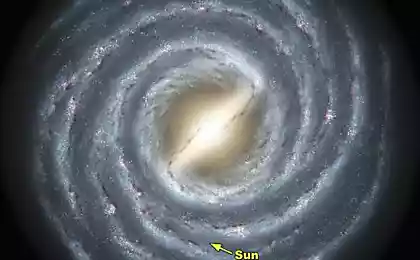477
Farmers from Australia vegetables with solar energy in the desert
In the South Australian desert is a farm Sundrop Farms, all running on solar energy and desalinated seawater. All the vegetables grown in greenhouses, standing in a rather deserted place. The construction of the farm was the result of research by a group of enthusiasts who sought to find a way to grow crops where there is fresh water, suitable soil and power lines. The researchers believe that it is time to get used to grow food in such conditions, because clean water and good soil is becoming less.

In conventional greenhouses for irrigation uses fresh water, electricity for lighting and maintaining a certain temperature, often fail gas for space heating, but what if all this is not, and I want to eat? Here's the solution: solar panels produce enough energy to maintain a favorable plant temperature, and at the same time helping to feed station, the processing of salt water into fresh. After that, she has no problems to throw the future of delicious and healthy tomatoes and many other vegetables and grains!

Mirrors rotate to track the sun during the day, the solar energy obtained in this way, heats up the tank with oil, and already from it to a temperature of 160 degrees Celsius is heated and then evaporates the salt water. Steam used for heating greenhouses and the production of electricity that is required including for the station of desalination of water, which before watering to add nutrients.
SUBSCRIBE to OUR youtube channel that allows you to watch online, download from YouTube free video about the recovery, the rejuvenation of man. Love for others and ourselves, as the feeling of high vibrations — an important factor for improvement .
Put LIKES and share with your FRIENDS!
www.youtube.com/channel/UCXd71u0w04qcwk32c8kY2BA/videos
Three years ago, the founders of the farm could only dream of on the current results, but their harvest can be described as impressive by the end of the second year the farm grew its first ton of vegetables. Now in greenhouses grows up to 17 tonnes of the crop. Not bad, but information about how soon will pay off all investments, the owners of the farm are not reported. published
Source: hi-news.ru/technology/fermery-iz-avstralii-nauchilis-vyrashhivat-ovoshhi-s-pomoshhyu-solnechnoj-energii-v-pustyne.html

In conventional greenhouses for irrigation uses fresh water, electricity for lighting and maintaining a certain temperature, often fail gas for space heating, but what if all this is not, and I want to eat? Here's the solution: solar panels produce enough energy to maintain a favorable plant temperature, and at the same time helping to feed station, the processing of salt water into fresh. After that, she has no problems to throw the future of delicious and healthy tomatoes and many other vegetables and grains!

Mirrors rotate to track the sun during the day, the solar energy obtained in this way, heats up the tank with oil, and already from it to a temperature of 160 degrees Celsius is heated and then evaporates the salt water. Steam used for heating greenhouses and the production of electricity that is required including for the station of desalination of water, which before watering to add nutrients.
SUBSCRIBE to OUR youtube channel that allows you to watch online, download from YouTube free video about the recovery, the rejuvenation of man. Love for others and ourselves, as the feeling of high vibrations — an important factor for improvement .
Put LIKES and share with your FRIENDS!
www.youtube.com/channel/UCXd71u0w04qcwk32c8kY2BA/videos
Three years ago, the founders of the farm could only dream of on the current results, but their harvest can be described as impressive by the end of the second year the farm grew its first ton of vegetables. Now in greenhouses grows up to 17 tonnes of the crop. Not bad, but information about how soon will pay off all investments, the owners of the farm are not reported. published
Source: hi-news.ru/technology/fermery-iz-avstralii-nauchilis-vyrashhivat-ovoshhi-s-pomoshhyu-solnechnoj-energii-v-pustyne.html
























